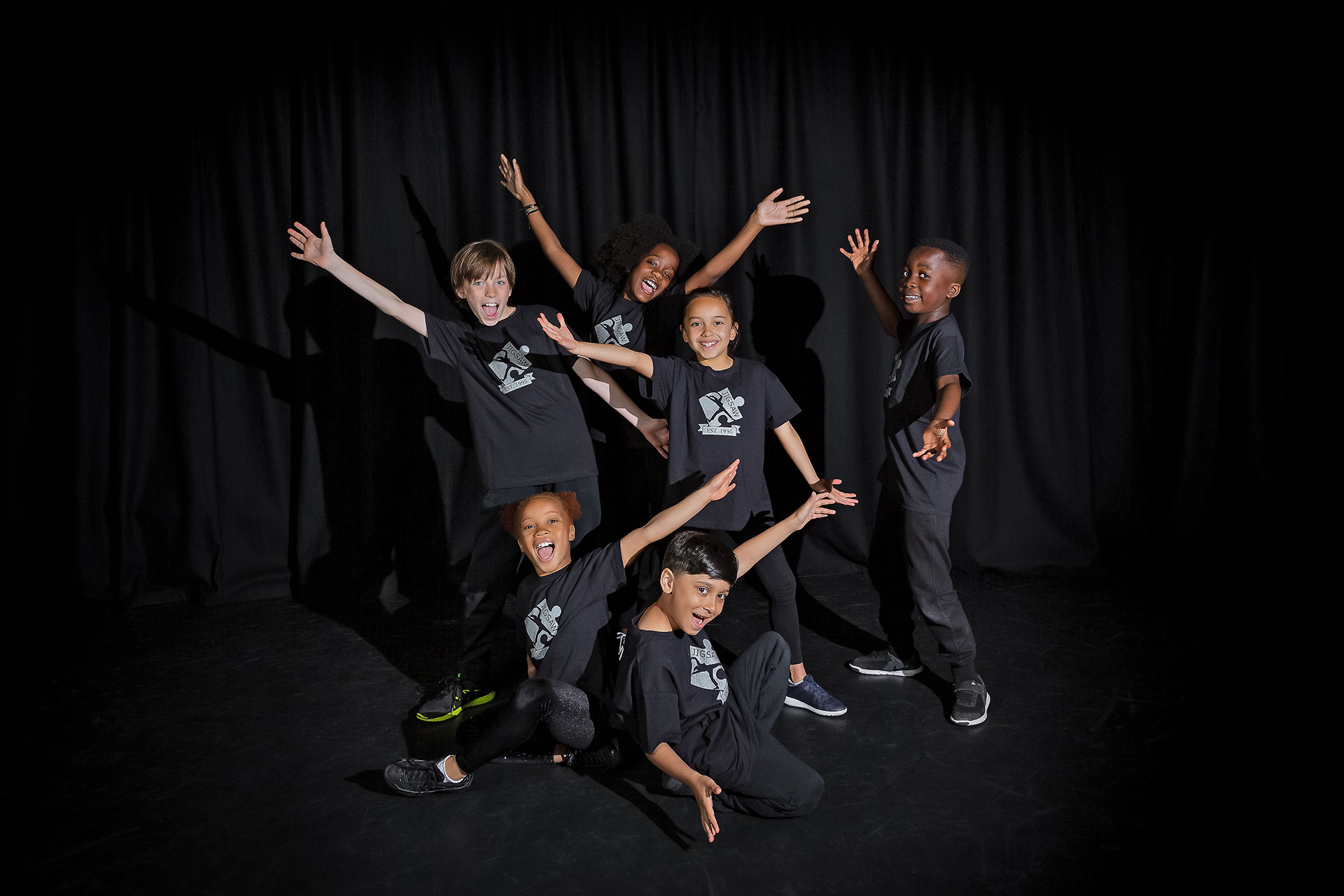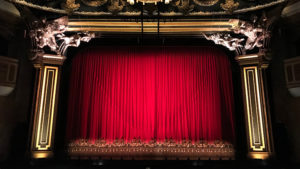The theatre truly has its own vocabulary. We have put together this list of crucial terms to help you better navigate the world of the stage and theatre history.
While this list is not intended to be comprehensive, it will give you a start as to the meaning and origins of staple theatre phrases.
1) Break a Leg
It’s bad luck to say good luck on opening night, but how did we land on “break a leg”? There are a few explanations. In Ancient Greece, audiences didn’t clap at performances, they stomped. The more they stomped, the more chance there was of breaking a leg; this tradition reappeared in Elizabethan England when audiences would stomp their chairs and, again, more stomping would break the leg of the chair. Wishing someone “break a leg” is wishing for thunderous applause.
2) Toi, Toi, Toi …
Around the world, there are yet more phrases to substitute for well wishes. “Toi, toi, toi” in Germany emanates from the German/Yiddish history of spitting to ward off evil spirits and bad luck.
3) In the limelight
Limelight was the first gas lamp alternative for lighting theatres. Invented in the early 1800s, limelight was generated by heating calcium oxide with a blend of oxygen and hydrogen. Theatres first began using limelight in the 1830s as the first spotlight. Now, we continue to say that those in the limelight are the centre of attention.
4) Wing it
This theatre phrase has now been incorporated into the greater colloquial lexicon, but when actors would “wing it” they were going on unprepared. It comes from the practice of playing a part without memorizing the lines, relying on the prompter in the wings or pages of text affixed to set pieces like the wing flats.
5) Dark Theatre or Dark Day
The majority of professional productions play eight shows over six days of the week. The day off is known as the theatre’s “dark day” for the simple fact that all the lights are off as there is no performance.
6) The Scottish Play
You should never say Macbeth inside a theatre, but call it “The Scottish Play.” Of course, Shakespeare was an English playwright, but the euphemism refers to the Scottish setting. The superstition also extends to calling the title character the Scottish King or Scottish Lord and his wife the Scottish Lady. A wildly popular play, The Scottish Play was often put on in theatres with financial troubles to attempt to reverse their fate. Thus began the association of the work with failing theatres.
7) House
The “house” can refer to a couple of things in theatre: the actual auditorium, as well as the Front of House, which includes the foyer and box office. If you’re having a problem inside the theatre, you’ll want to speak to the house manager. You may have also heard the phrase “house seats”; these seats are reserved by producers (the heads of house).
8) Upstage and Downstage
While you probably know that upstage is farther away from the audience and downstage is closer to the edge of the stage, do you know why? Theatre pros coined the term due to the use of raked, or inclined, stages. The sloped architecture creates better sightlines and acoustics for audiences. But this also meant that as performers walked away from the house, they were hiking up the stage.
9) Blocking
The precise staging of the actors, their path of movement in scenes, is known as blocking. The term came into popular use in the 1960s based on the tradition of 19th-century theatre directors who worked out their scenes on a mini model of the stage, using blocks to represent actors.
10) Strike
To strike the set means to take down the set and make way for the next production.
11) 11 O’Clock Number
Back in the day, shows typically began at 8:30 PM. When 11 o’clock rolled around, it was time for the big showstopping number, the penultimate song in the show.
12) Overture
A medley of tunes from the score of a musical, the overture plays after the lights go down and before the curtain goes up as an introduction to the show. The term comes from the French ouverture, which means “opening.”
13) Sitzprobe
Sitzprobe translates to “seated rehearsal.” This is typically the first rehearsal when the orchestra and the cast sing through the show in its entirety while sitting at music stands.
14) Proscenium Stage
This is the most common orientation of a theatre. The stage is framed like a picture by the proscenium, with the stage on one side opposite the audience.
15) Thrust Stage
A stage “thrust” into the audience, with the audience on three sides.
16) Arena Stage
An arena is a central stage surrounded by audiences on all sides.
17) Flexible Theatre or Black Box
In a flexible theatre, the seating is not predetermined but can change from production to production. Because of this, the rooms are often painted all black so that any side can convert to a backstage area. Hence, a black box.
18) Stalls
The ground level of seating, these tickets are closest to the stage. In fact, the stage is often raised above the orchestra, so sitting in the front row means you’ll be craning your neck a bit.
19) Balcony
The balcony is a higher seating section that hangs over the orchestra. The balcony hangs over the stalls. It is sometimes called the Dress or Royal Circle.
20) Lead
The main character in the story and generally a performer with multiple solo moments.
21) Ensemble or chorus member
This term is typically reserved for cast members in musicals—not plays. They are performers who create the background and the world of the show. They don’t necessarily have lines or solo songs, but appear in group scenes and musical numbers to give a sense of context. They’re also the ones singing harmonies and dancing for their lives.
22) Understudy
A member of the ensemble who performs in their own role every performance but also knows the material for one or more leading roles. The understudy can be called upon when a lead actor is out of the show.
23) Swing
If an understudy goes on in a principal role, that means they will not go on in their usual ensemble track. A swing knows every single ensemble track in a production and goes on when an ensemble member is away.
24) Standby
A standby is a performer who knows all of the material for a lead role—and goes on if the leading actor is out—but does not otherwise perform in the show.
25) Previews
The first performances of a professional run are preview performances. These are full performances presented with all of the full elements of the show—the cast, costumes, lighting, sets, etc. Previews indicate that the show is in flux. The creative team may make changes to the show night to night. During this time, the company performs by night and rehearses by day. For example, on Wednesday night a director might realize a line is not getting the laugh it needs. He lets the musical’s writer know. The next day the writer has a new script page with a new line. During Thursday rehearsal the performer practices the scene with the new line and Thursday night the cast performs the show with that change.
26) Opening Night
After preview performances, there is an official opening night. This performance is the production as it will be performed from here on out. Reviews for productions are published only after the curtain goes up on opening night.
Jigsaw Performing Arts, established 1995, is dedicated to developing performance skills, promoting self-expression and building confidence. We offer performing arts classes for children aged between 3 – 18. Find your nearest school by entering your postcode into the search on our home page.


